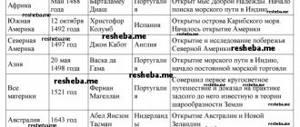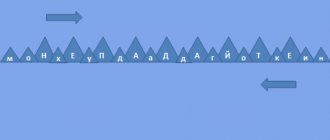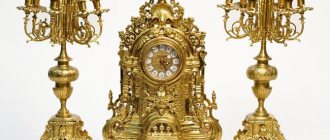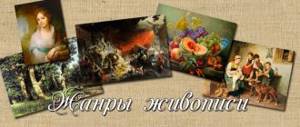Lesson summary on the topic “Valery Bryusov - the leader of Russian symbolism”; Grade 11
Topic : “Valery Yakovlevich Bryusov, leader of Russian symbolism”
The purpose of the lesson is to give an idea of the personality and creativity of V.Ya. Bryusov as an outstanding theorist and practice of symbolism, using the example of poems read in advance, to identify the features of the themes and problems of lyrics, poetics and creative features; understand the poet’s influence on the formation of Russian poetry of older and younger symbolists.
Lesson Plan
1) Repetition, updating of knowledge on the topic “Modernism, its emergence and development” (approx. 10 min.).
2) V.Ya.Bryusov, brief biochronicle, lyric motives (approx. 10 min).
3) Analysis of poems according to a given sample (what, why, how is it written?) (approx. 20 min).
4) Summing up, generalizing theoretical and literary knowledge in connection with Bryusov’s work (approx. 10 min.).
5) Homework (approx. 5 min.).
Material used by students in preparation for the lesson
Textbook “Literature. Grade 11. Ed. V.Zhuravleva"
A collection of lyrics by V.Ya. Bryusov with pre-titled poems (see paragraph 3 - “Analysis of poems”)
Optional – L.N. Gumilev’s book “From Rus' to Russia”
Literary dictionary
Estimated course of the lesson
1. Introductory part . Teacher's comment on the topic and its formulation. The form of work is question-and-answer ( V. - O ).
IN.:
What is modernism as a general cultural phenomenon, the time and reasons for its appearance? What is symbolism, what ideas about symbols exist? What are the features and stages of development of Russian symbolism?
ABOUT.:
Students give answers to the questions posed in accordance with previously acquired knowledge about the stages of development of modernism, the influence of impressionism on Russian modernism, talk about older and younger symbolism, their ideological and creative differences, name names (Merezhkovsky, Bryusov, Balmont, Annensky, Blok, Bely and etc.).
2. Main part, work on new material (pre-read the article in the textbook (pp. 117-124))
IN.:
What are the most important stages in the formation of a poet’s personality?
Who and what influenced Bryusov’s human and creative development?
The main motives of the poet's lyrics?
ABOUT.:
Students talk about the family, the upbringing of the future poet, the influence of populist ideas, his student years, the formation of Bryusov - a journalist, publisher, poet.
They name the main motives of the lyrics (historical-mythological, urban, social), talk about the characteristics of the creative “I”.
At this stage of the lesson, theoretical concepts are updated (lyrics as a type of literature; epithet, metaphor, sound writing, etc. as examples of artistic techniques especially in demand by symbolists).
3. Analysis of poems in connection with their themes and issues (a list of required reading works is proposed in advance: “I”, “The Third Watch”, the cycle “Favorites of the Ages”, “Lanterns”, “Bricklayer”, “The Coming Huns”, “Horse” damn")
Comprehension and poetic evaluation occur in accordance with a single concept that has already been mastered by students in the previous period (analysis of a lyrical work as a type of oral and written work).
Students answer the questions:
— What is written in the poem (theme or theme)?
— Why was it written (problematics, ideological component, relevance)?
— How is it written (features of poetics, artistic techniques, tropes)?
When analyzing poems, the teacher should pay attention to the following aspects:
IN.:
— What are the cross-cutting motives and images of the lyrics ( O .: motives of the road, Scythianism, egocentrism, exclusivity of an outstanding personality - “I”, “Don Juan”, “Scythians”, “Napoleon”, “Cleopatra”)?
— What is the connection between the apparent “elitism” of the symbolist Bryusov and the surrounding historical reality ( O .: see “Mason”, “The Coming Huns” - i.e. the themes that arose during the period of social upheaval of the early 20th century in Russia)?
— What is the pattern, the historical predetermination of the themes and problems of Bryusov’s lyrics during the Silver Age? ( O .: this is not only the period of flourishing of “passionarity” in art (see the concept of L.N. Gumilyov, for example, in the book “From Russia to Russia”, accessible to students), but also a time of great historical changes - “Lanterns”, “ Horse Bled", "The Third Watch").
4. Summing up the lesson. Generalization of theoretical and literary knowledge in connection with the work of Bryusov.
IN.:
What techniques of symbolism does Bryusov use? What is special about his view of the place of the poet and poetry in society? What is the role and place of V.Ya. Bryusov in the cultural process of the 19th and 20th centuries?
ABOUT.:
Students talk about the symbolism of poetry, giving examples, about the peculiarities of the perception of “I” (“... I was caressed by everyone, but I myself loved only a combination of words”).
There should be a topic about Bryusov, the publisher and organizer who influenced the formation of poets of a later period (for example, Blok and, in particular, Gumilyov).
If there is time left, the teacher reads N.S. Gumilyov’s poem “The Magic Violin”, dedicated to V. Bryusov.
5. Homework:
pp. 124-130 (textbook “Literature. Grade 11. Edited by V. Zhuravlev);
read and analyze according to a well-known plan (what, why, how) K.D. Balmont’s poems “We will be like the Sun”, “Dagger words”, “I am the Chosen One...”, “I do not know wisdom...”, “Scythians”, “ Little Sultan”, etc. (optional).
Full text of the material Lesson summary on the topic “Valery Bryusov - the leader of Russian symbolism”;
For grade 11, see the downloadable file . The page contains a fragment.
| Author: Kuznetsova Natalya Nikolaevna → Publisher 11/06/2015 0 6467 506 | Comment |
Thank you for your mark. If you want your name to be known to the author, log in to the site as a user and click Thank you again. Your name will appear on this page.
Login | Registration
Have an opinion? Leave a comment
Symbolism - 11th grade lesson plan on literature (11th grade) on the topic
Topic: “Silver Age” of Russian poetry.
Symbolism
Goals:
Educational
1) study the content of the term “Silver Age”;
2) identify the sources of symbolism, the main ways of its development;
3) identify the philosophical and aesthetic foundations of a new movement in poetry;
4) name its main representatives
Educational:
- improve the skills of systematically complex analysis of a lyrical work;
- develop skills in independently searching for information on this topic;
Educational
- to cultivate a culture of mental work among students based on such mental operations as analysis, synthesis, grouping, and comparison.
Lesson type: lesson-lecture
Equipment:
- computer (presentation in Microsoft Power Point 2007-2010);
- video projector, screen;
During the classes
Organizing time.
- Introduction.
At the turn of the 19th-20th centuries. Important cultural and historical changes are taking place in Russia. Let's remember which ones? Artists of words felt the need for change in literature. New techniques were needed in depicting reality. The realistic method was rejected by many. Modernism was born in Russian literature.
- Lecture part (recorded):
What is modernism? Modernism is a movement in Western European and Russian art at the turn of the 19th and 20th centuries, characterized by a break with previous art and seeking to establish new, non-traditional principles in art.
Modernism is close to the concept of avant-garde, but they are not synonymous. Avant-garde is a general name for a number of movements characterized by extreme rejection of existing art, a focus on shock and outrageousness, anarchism and anti-aestheticism (for example, futurism, imagism, surrealism, etc.).
The basis of Russian modernism was made up of three literatures. currents that arose in the period from 1890 to 1917. - this is symbolism, acmeism and futurism.
What is the "Silver Age"? This is how they began to designate a period in the poetry of the turn of the century, in continuation of the term “golden age” (the era of Pushkin, Lermontov). This term was first used by Nikolai Otsup, a future emigrant poet. Subsequently, the term began to be used by A. Akhmatova and N. Berdyaev. The aesthetic foundation of the new period in poetry can be considered an article by the Russian philosopher N. Berdyaev with the same title “The Silver Age in Russian Poetry”).
Symbolism is the first and largest of the modernist movements that arose in Russia, which considered the goal of art and creativity to be an intuitive comprehension of reality through images-symbols. The symbolists rejected the realistic method of depiction and did not accept the surrounding reality. They proclaimed the primacy of the illusory comprehension of life, therefore in their creativity they turned to mystical, foggy worlds and fantasy. Renewed interest in the myth. They saw in him a commonality with the symbol. Creativity was represented as theurgy, i.e. deification. The poet is equal to the deity, his work is a secret prayer.
The beginning of the theoretical self-determination of the symbolists was the lecture of D.S. Merezhkovsky “On the causes of the decline and new trends in modern Russian literature”, read in 1892. In his opinion, new trends had to revive literature, having completed “enormous transitional and preparatory work.” And he called its main elements “mystical content, symbols and the expansion of artistic impressionability.” The article became programmatic, a manifesto of symbolism. Along with her, other poets also created their manifestos (“Keys of Secrets” by V. Bryusov, “Testaments of Symbolism” by Vyach. Ivanov).
In addition, in 1894, three collections of poems “Russian Symbolists” were published in Moscow, where most of the poems belonged to V.Ya. Bryusov. Social and civic themes were pushed aside by symbolism. Existential themes came to the fore: Life, Death, God.
Symbol is the main category. It's not easy to understand. This is a riddle, an allegory of life. An ambiguous term. This is a sensory comprehension of life.
Music is the second aesthetic category. The world was perceived as rhythm. Hence the active appeal to sound recording (K. Balmont, for example).
Support is the philosophy of F. Nietzsche and V. Solovyov. The German philosopher F. Nietzsche was one of the founders of the “philosophy of life”. He opposed rationalism, appealing to the irrational in the human psyche. Nietzsche focused on criticizing Christianity and rationalism, which “oppress the will to live.” Created the doctrine of the “superman” (they should know, ask them to remember).
Vladimir Solovyov was the forerunner of symbolism. proceeded from the fact that in addition to present reality, there is a sphere of the divine, i.e. absolute, unconditional principles that have a positive impact on humanity. Created the doctrine of All-Unity. The poetic expression of the idea of unity is the symbols of “eternal femininity”, “soul of the world”, “golden azure”, “unearthly light” and “consonance of the universe” (these images will later be found in A. Blok and A. Bely).
Printed publications of Russian symbolists: “Golden Fleece”, “Scales”.
Symbolism from the very beginning turned out to be a heterogeneous movement. Therefore, based on external signs, it is customary to distinguish two main stages in Russian symbolism.
Let's make a diagram:
The older Symbolists called themselves “Nietzscheans,” the younger ones called themselves “Solovievites.” In the past, the older Symbolists were decadents. Decadence is a type of consciousness, an attitude towards the world in an era of crisis, a feeling of despondency, anxiety, fear of life, disbelief in a person’s ability to know the world, change it and change himself.
In 1920 there was a crisis of symbolism. We've exhausted ourselves. Acmeism is born.
Homework:
- Make notes on the works of V. Bryusov and K. Balmont (see textbook).





